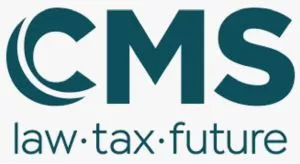- with readers working within the Oil & Gas industries
- within Wealth Management, Media, Telecoms, IT and Entertainment topic(s)
In the ever-evolving private funds landscape, the concept of listing is gaining increasing traction as a strategic move for fund managers. Listing can offer a myriad of benefits that go beyond traditional fundraising methods, especially in the current challenging environment. One of the key advantages of listing private funds is the ability to increase the regulatory profile of the offered securities. This enhanced regulatory standing can help meet specific compliance requirements sought by sophisticated investors like pension funds and attract additional capital to private funds. Furthermore, listing can streamline the subscription and transfer processes for securities, which is particularly important in handling efficiently larger transaction volumes. In certain jurisdictions, listing can also provide tax benefits to individual investors, adding another layer of appeal for fund managers considering this route. Enhancing visibility is another core benefit of listing private funds. Platforms like the Luxembourg Green Exchange (the LGX) are specifically designed to highlight environmental, social and governance (the ESG) strategies and sustainability efforts. While this overview provides a glimpse into the potential advantages of fund listing, it is essential to recognise that each listing approach may have its own nuances and specificities. Exploring a listing strategy could unlock new horizons and broaden investor bases for private funds in an increasingly competitive market environment.
I. Listing routes
When considering funds listing, it is essential to understand the various aspects involved in the process. Both EU and non-EU alternative investment funds may be listed in Luxembourg and other major European markets. It is worth highlighting that eligible funds for listings are those that issue securities, distinguishing them from funds structured in capital accounts. In terms of types of funds, open-ended and closed-ended funds are common categories regardless of the specific fund product. Alternative investment funds (the AIFs) can fall into either category, as their nature is linked to investors' rights to redeem investments at will. Open-ended funds typically face fewer listing requirements compared to closed-ended funds. It is important to note that an AIF does not necessarily need to be listed in its entirety. An AIF may create distinct classes of securities tailored to meet specific regulatory needs for listing purposes while retaining conventional capital-raising methods for other investor segments. This approach allows fund managers to attract a diverse range of investors by offering bespoke investment options based on risk tolerance, return expectations, regulatory requirements, and other factors.
II. Indicative timeline for fund's listing
Listing an investment fund involves several steps that may vary depending on the market and the targeted investors' profile. The process starts with setting up the investment fund and preparing the offering documentation. With the assistance of a legal counsel, the next step is to submit the offering documents, along with a list of required documents, either to the regulator or the market operator of the stock exchange. The process is typically quicker when the authority is a market operator as opposed to the regulator. In Luxembourg, the regulator might usually take a few weeks, whereas the market operator may respond to applicants, either with comments/questions or the corresponding approval within two (2) business days. Once the offering documentation is approved, the securities should be live for trading on the same day.
III. Popular fund listing venues
There are numerous popular venues available in Europe. Each listing venue offers unique opportunities and considerations that can impact the success of the investment fund. One prominent listing venue for investment funds is Euronext, a significant stock exchange in Europe with markets in Dublin, Brussels, Oslo, Paris, Amsterdam, Lisbon, and Milan. Euronext provides a platform for investment funds to list and reach a broader investor base. Another notable destination is the London Stock Exchange (the LSE), catering to closed-ended and real estate investment trusts primarily domiciled in the United Kingdom (the UK) and other Commonwealth jurisdictions like Guernsey, Jersey, and Bermuda. The LSE offers a diverse range of listings for different types of investment vehicles. Subsequently, the Frankfurt Stock Exchange (the Frankfurter Wertpapierbörse or the FWB) stands out as one of the largest stock exchanges globally and accepts listings from investment funds domiciled across various jurisdictions worldwide. With over two thousand (2000) listed funds encompassing mostly equity funds, but also fixed income funds, money market funds, real estate funds and funds of funds, FWB provides ample opportunities for fund promoters. The International Stock Exchange (the ISL) also presents an attractive choice, as it accepts listing from investors, investment vehicles established in different jurisdictions. Located in the Channel Islands, the ISL currently lists investment vehicles from regions such as the UK, Cayman Islands, Jersey, and Malta across diverse fund categories including debt, distressed debt, equity funds, hedge funds, insurance linked securities, private equity, real estate and real estate investment trusts. Luxembourg Stock Exchange (the LuxSE) emerges as another prominent destination for fund promoters within and outside the EU. Hosting over three thousand four hundred (3400) classes of more than one hundred ninety (190+) listed funds including inter alia, undertakings for collective investment in transferable securities (the UCITS), exchange-traded funds (the ETFs), as well as AIFs and European long-term investment funds (the ELTIFs). The LuxSE has emerged as the preferred domicile for listed ELTIFs.
Choosing your market
Issuers and fund managers are presented with a wide variety of market options. These include regulated markets and unregulated markets, such as multilateral trading facilities (the MTFs) and organised trading facilities (the OTFs) as defined in Directive 2014/65/ of the European Parliament and of the Council of 15 May 2014 on markets in financial instruments, as amended (the MiFID II). For instance, in Luxembourg, there are two primary markets operated by the LuxSE:
- the Bourse de Luxembourg, which is the regulated market, and
- the Euro MTF, which is the non-regulated market.
Each of these markets features specific segments designed to cater to different investor types - a professional segment for professional investors exclusively and a general market open to all investor categories. AIFs can opt for either Bourse de Luxembourg or Euro MTF. The regulated market, the Bourse de Luxembourg, needs approval of the prospectus by the Luxembourg national competent authority (the NCA) – the Commission de Surveillance du Secteur Financier (the CSSF), in compliance with Regulation (EU) 2017/1129 of the European Parliament and of the Council of 14 June 2017 on the prospectus to be published when securities are offered to the public or admitted to trading on a regulation market (the Prospectus Regulation). It is noteworthy that a prospectus approved by the CSSF benefits from the EU passport. Conversely, the CSSF approval of the prospectus is not a prerequisite for the non-regulated market, the Euro MTF. However, the prospectus in this case needs to be validated by the market operator, the LuxSE, without benefiting from the EU passport. Further, Euro MTF offers an appealing pathway for non-EU fund promoters desiring access to EU capital markets. Moreover, sustainable alternative investment funds listed on either regulated or non-regulated markets may consider listing on exchanges such as the LGX if they meet criteria for green social and sustainability securities.
IV. Listing requirements
In relation to the listing requirements that apply to closed-ended funds, it is important to distinguish between conditions applicable to the issuer and those relevant to the fund itself. For an issuer aiming for each fund's listing, some fundamental conditions are unwavering compliance with applicable laws and statutory documents, foreseeable stock market capitalisation or minimum capital requirement as well as transparency requirements which may be greater than the ones applying to issuers of non-listed securities. To ensure closed-ended funds' strength and viability under EU legislation, market operators stipulate specific financial thresholds that issuers must meet. The issuer must demonstrate either a foreseeable stock market capitalisation of its shares or maintain a minimum capitalisation of the company exceeding one million Euro (EUR 1,000,000). This financial benchmark underscores the issuer's stability and fiscal soundness. However, it is important to note that a waiver from this criterion may be granted should the issuer demonstrate that there is adequate market for the shares. It is crucial to note that certain information must be disclosed by the closed-ended fund in accordance with the Prospectus Regulation. Added to this, it is essential to point out that open-ended funds are not subject to all these listed requirements due to the nature of their shares being freely transferable. Regarding share-related conditions, similar to those for issuers, shares of closed-ended funds seeking listing must comply with all relevant laws and statutory documentation while being freely negotiable without transfer restrictions. Furthermore, as a third criterion, there should be a substantial public share distribution ensuring broad access and participation in the fund as mandated by EU regulations. Market operators require a minimum of twenty-five per cent (25%) of subscribed capital represented by shares available publicly. However, this will change with the adoption of a package of measures known as the "Listing Act" (the Act). Through the Act as well as the subsequent amendment to the MiFID II, this subscribed capital has been reduced from twenty-five per cent (25%) to ten per cent (10%), and additionally the investors considered for this subscribed capital may also be outside from outside the EU.1 With regard to the permissibility of listing an ELTIF on a stock exchange, it has been confirmed by the Regulation (EU) 2015/760 of the European Parliament and of the Council of 29 April 2015 on European long-term investment funds (the ELTIF Regulation) that this is indeed permissible. When considering the listing process for funds, it is essential to provide comprehensive information to the market operator. This includes details on the fund's investment objectives, investment policy, investment restrictions, as well as any indication of any borrowing techniques and instrument of powers which may be used in the management of the AIF. In addition, the information to be provided to the market operator shall include, inter alia:
- the valuation of the assets,
- the name, registered office, type of fund under management of the alternative investment fund manager (the AIFM) of the AIF,
- the custody of the assets of the AIFM,
- the investment adviser(s) of the AIF, (e) expenses, or fees and the method of publication of notices,
- the assets and liabilities of the AIF, the financial position, profits, and losses, and
- an updated prospectus, articles of association or equivalent instrument.
V. Documentation package for listing in Luxembourg
The documentation package required for listing a fund is not standardised and may vary based on the stock exchange's specific requests. To obtain approval for listing, issuers must submit the following documents (the list is not extensive):
(a) Corporate documents:
- limited partnership agreement, articles of association or management regulations of the fund and/or of the general partner,
- business register's extract,
- structure chart,
- evidence of regulation (if applicable)
- list of authorised signatories and evidence of power of signatures,
- list of legal representatives and power of representation,
- the three (3) last annual reports, or a waiver letter (if applicable)2.
(b) Offering documents:
- prospectus approved by the NCA or by the market operator or, if applicable,
- a declaration that the conditions for exemption of the Prospectus Regulation have been met, declaration that no significant events that may influence the valuation of the shares have occurred since the approval of the prospectus (if applicable),
- listing particulars (if applicable).
(c) Transaction documents:
- AIFM agreement,
- depositary agreement,
- any service provider (s) agreement (s),
- detailed analysis of the fund's portfolio.
(d) LuxSE forms and share's information:
- listing application & listing date,
- know your client (the KYC) form,
- letter of undertaking,
- list of shareholders,
- the maximum number of shares to be listed (for closed-ended funds),
- price, total net assets value of the listed shares,
- clearing house confirmation of the shares.
VI. Concluding remarks
Adopting a listing strategy is an important gateway for private funds to access new opportunities and expand their investor base in today's highly competitive market. To maximize this approach, fund managers need to strategically tailor their listing process in order to meet regulatory requirements and attract a diverse range of investors. The variety of listing venues across Europe offers numerous opportunities for funds to access varied investor pools and cater to a range of investment vehicles, significantly influencing their listing journey. These options enable issuers and fund managers to make smart decisions that align with their unique needs and goals. Understanding and meeting the specific listing requirements for funds is crucial, ensuring full compliance with EU legislation and promoting long-term financial stability. Issuers need to approach the listing process with unwavering diligence and precision to successfully navigate the complex regulatory landscape. Ultimately, adopting a listing strategy is more than regulatory compliance, it is a strategic move towards unlocking untapped potential and plotting a path for sustainable growth in a constantly evolving market environment.
Footnotes
1. The amendment to MiFID II was published in the Official Journal of the EU on 14 November 2024 and entered into force 20 days later. It will take effect 12 months after its entry into force. The EU Member States will have 18 months to transpose changes to MiFID II.
2. The market operator of the stock exchange may grant waivers under its own discretion if the Member State allows it.
The content of this article is intended to provide a general guide to the subject matter. Specialist advice should be sought about your specific circumstances.
[View Source]




